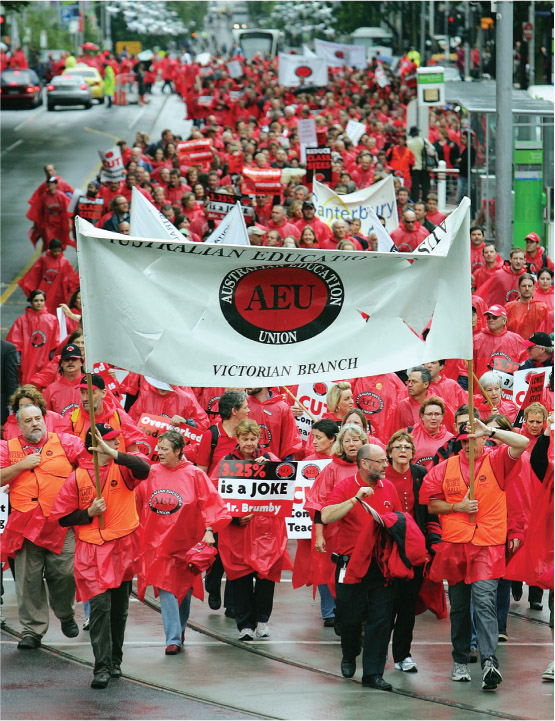21.4 Employees and trade unions
When a person becomes an employee it is expected that they will fulfil the duties and responsibilities stated in their job description. Their performance at the workplace will be judged against established performance standards. If they meet or even exceed these standards they may be recognised with some form of reward. This could take the form of a pay rise, a bonus payment or a promotion. If, however, they do not meet the predetermined performance standards, the employee may be required to undertake additional training to bring them up to the required standard or disciplinary counselling if their behaviour is not acceptable or appropriate.
Many businesses are now encouraging their employees to go above and beyond the normal expectations and responsibilities and to demonstrate initiative and in some case act as entrepreneurs. They are encouraging their employees to take risks, show initiative, be innovative, see opportunities where others don’t see them and then sell their ideas to others in the business. It is not only the individual that benefits from business.
A well-known example of innovation and entrepreneurship was the development of Post-It notes by 3M back in the mid-1970s. In 1970 a scientist, Spencer Silver, who was working in the 3M research laboratories, developed a new adhesive (weaker than 3M’s current one) which, while it stuck to things, could also then be lifted off. The idea was kept on the back burner until 1974 when Arthur Fry (another scientist), who was a member of a local church choir, decided to try the glue on small markers in his hymn book. He found they would stay in place but when required could be lifted off without damaging the book. This discovery then led to the commercial production of the Post-It Notes.
It is the role of managers to create a positive workplace culture where employers are encouraged and rewarded for being proactive and demonstrating initiative, whether they are in positions of authority or not. It has been demonstrated that when people enjoy their work, they are more creative. Modern organisations are now adopting a more team-oriented approach, which then encourages group creativity and collaboration of ideas.

For example, at Google, what started as a good management technique is now not as popular. In the past Google allowed its engineers to spend 20% of their time working on projects of their choosing. Some of the company’s most successful products (for example, Gmail, AdSense, GTalk, Google Sky and Google News) were developed during this free time. When Google first started, Larry Page and Sergey Brin described the use of 20% time as a way to keep the company innovating. Unfortunately, employees are finding it harder and harder to find the 20% time in their schedules and upper level management have been instructing lower level managements not to approve the 20% time requests.
A trade union is a group of employees, usually from the same or similar industry, who have combined to protect their interests in all matters relating to their employment. The impact that trade unions have had on the work environment has been significant. They have achieved improvements in wages, working conditions and entitlements (benefits) such as annual leave, pensions, superannuation, maternity leave, parental leave and carer’s leave.
At the workplace, employees who have joined a union elect another employee member at that particular workplace to become their shop steward. That person then acts as the first point of contact for an employee with their trade union. Unions are run on a day-to-day basis by union executives, who are full-time union officials. In each state of Australia there are two key union organisations: their local state-based body (for example, the Victorian Trades Hall Council, Unions NSW, Queensland Council of Unions, SA Unions, Unions WA and Unions Tasmania) and the national peak body of the Australian union movement (the Australian Council of Trade Unions (ACTU)).

RESEARCH 21.2
Using the internet, research an Australian trade union and then prepare a written report explaining the following elements:
- a brief history of the union
- the number of members and occupations covered by that union
- any current campaigns being undertaken by that union
- the cost of membership and who is eligible to join that union
- the benefits of being a member of that union.
Possible unions to investigate include the Australian Workers Union (AWU), Electrical Trades Union (ETU), Australian Education Union (AEU) and Australian Metal Workers Union (AMWU).
